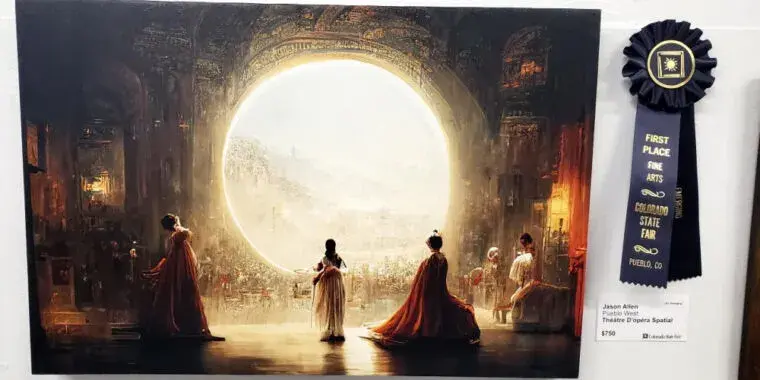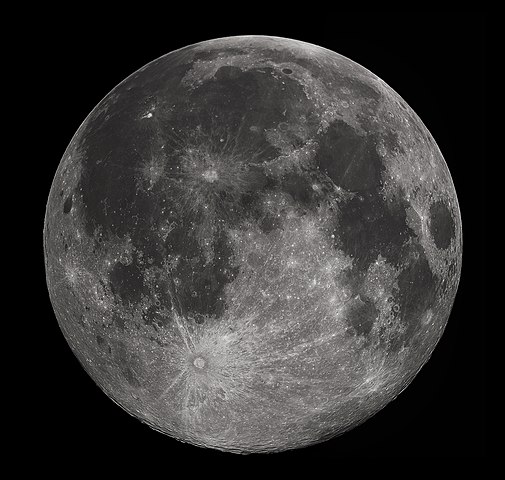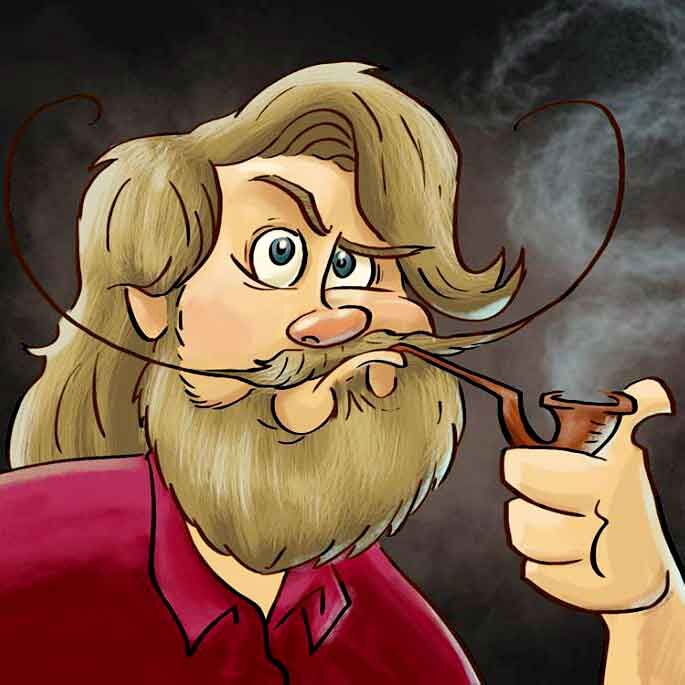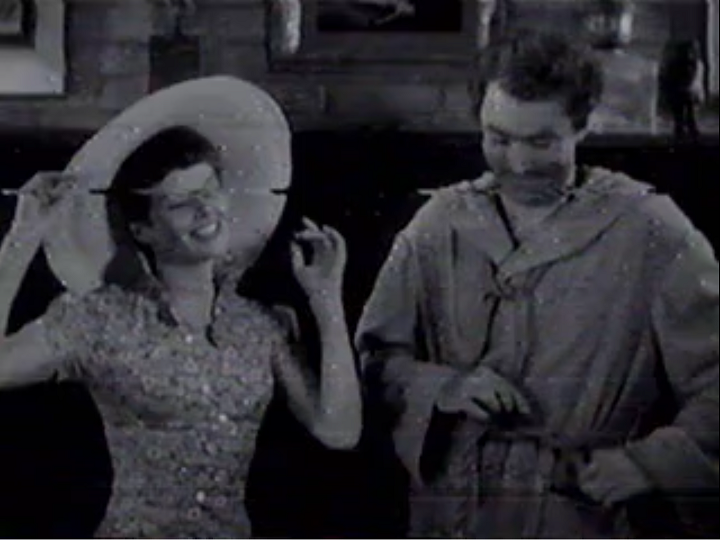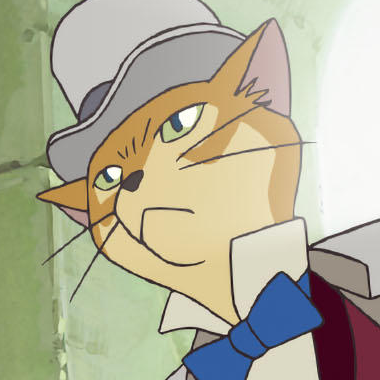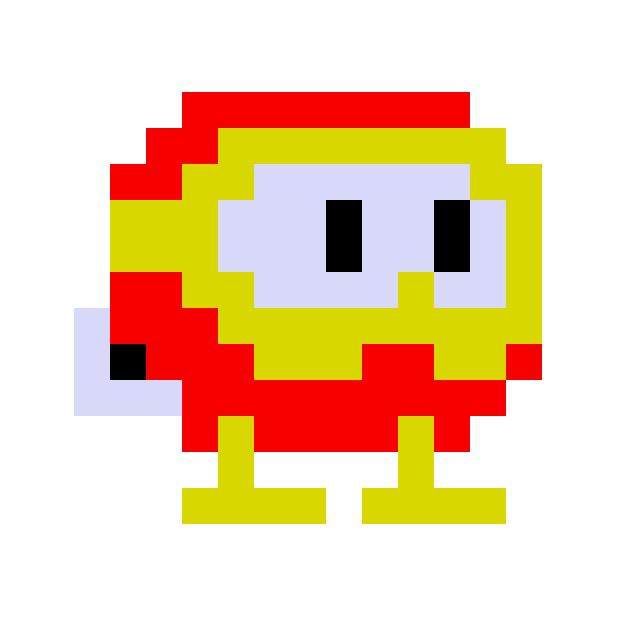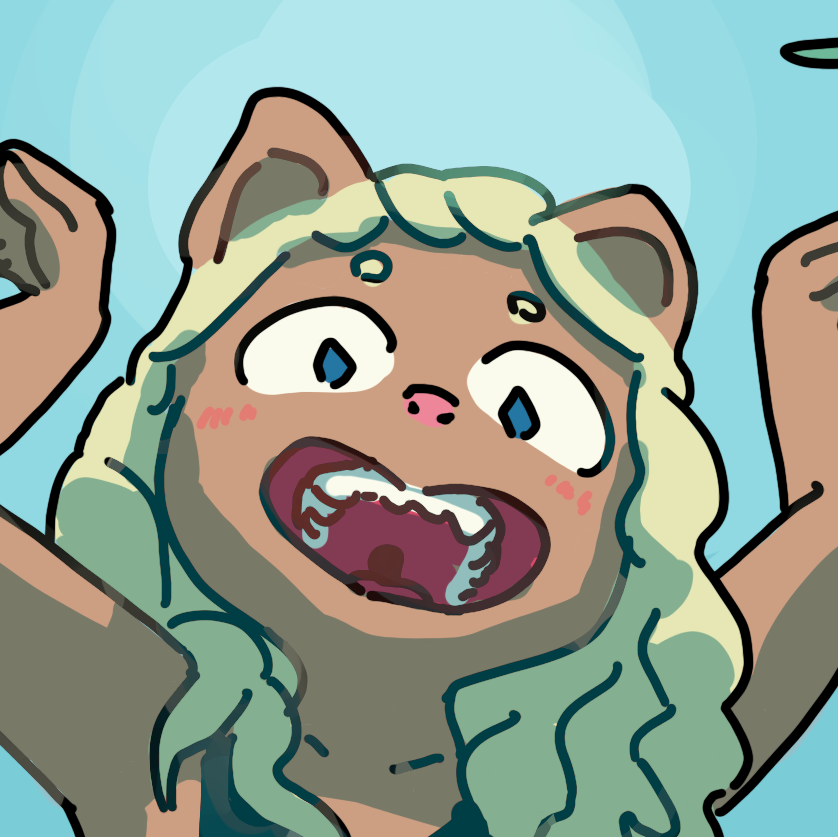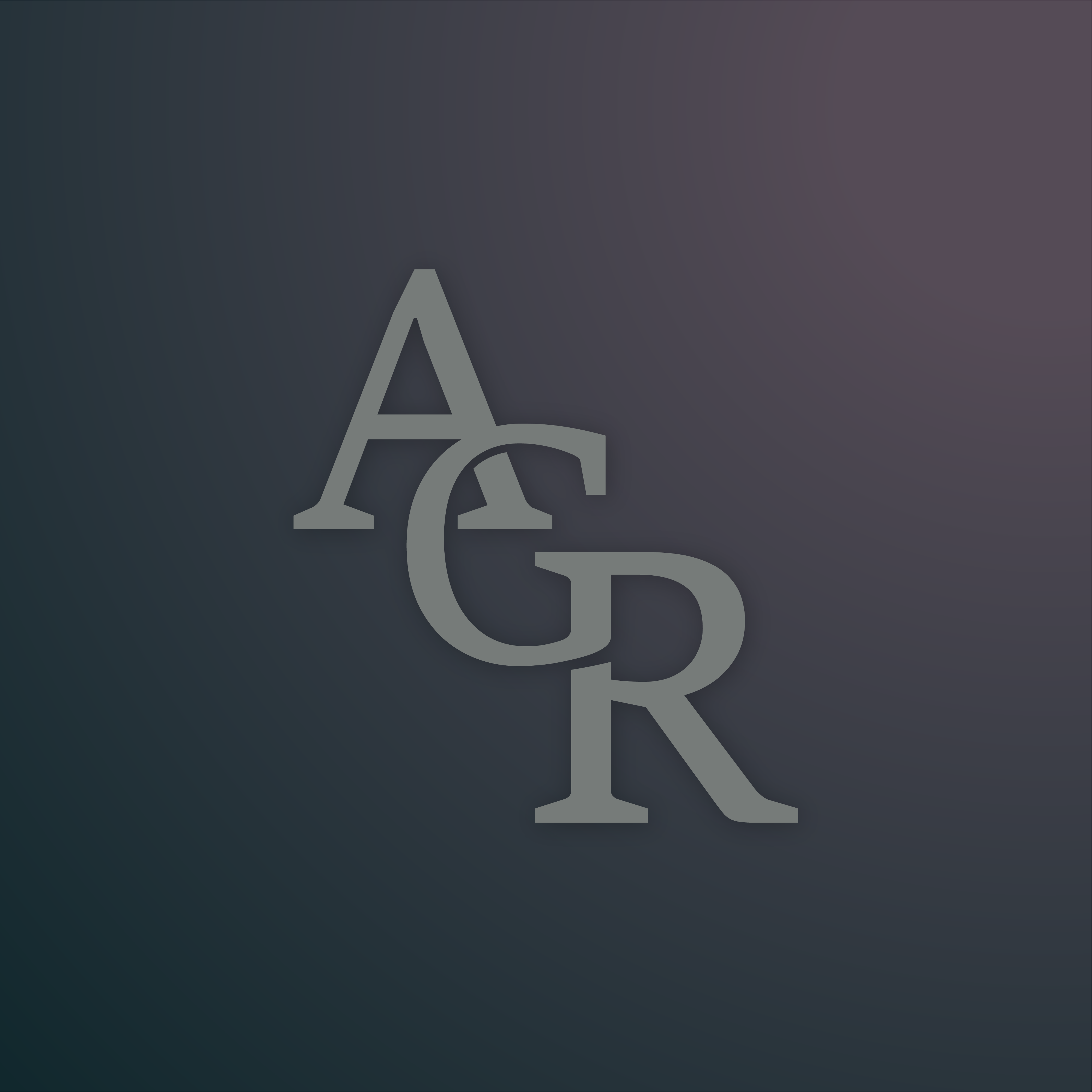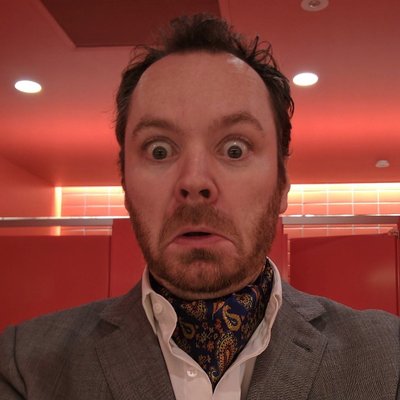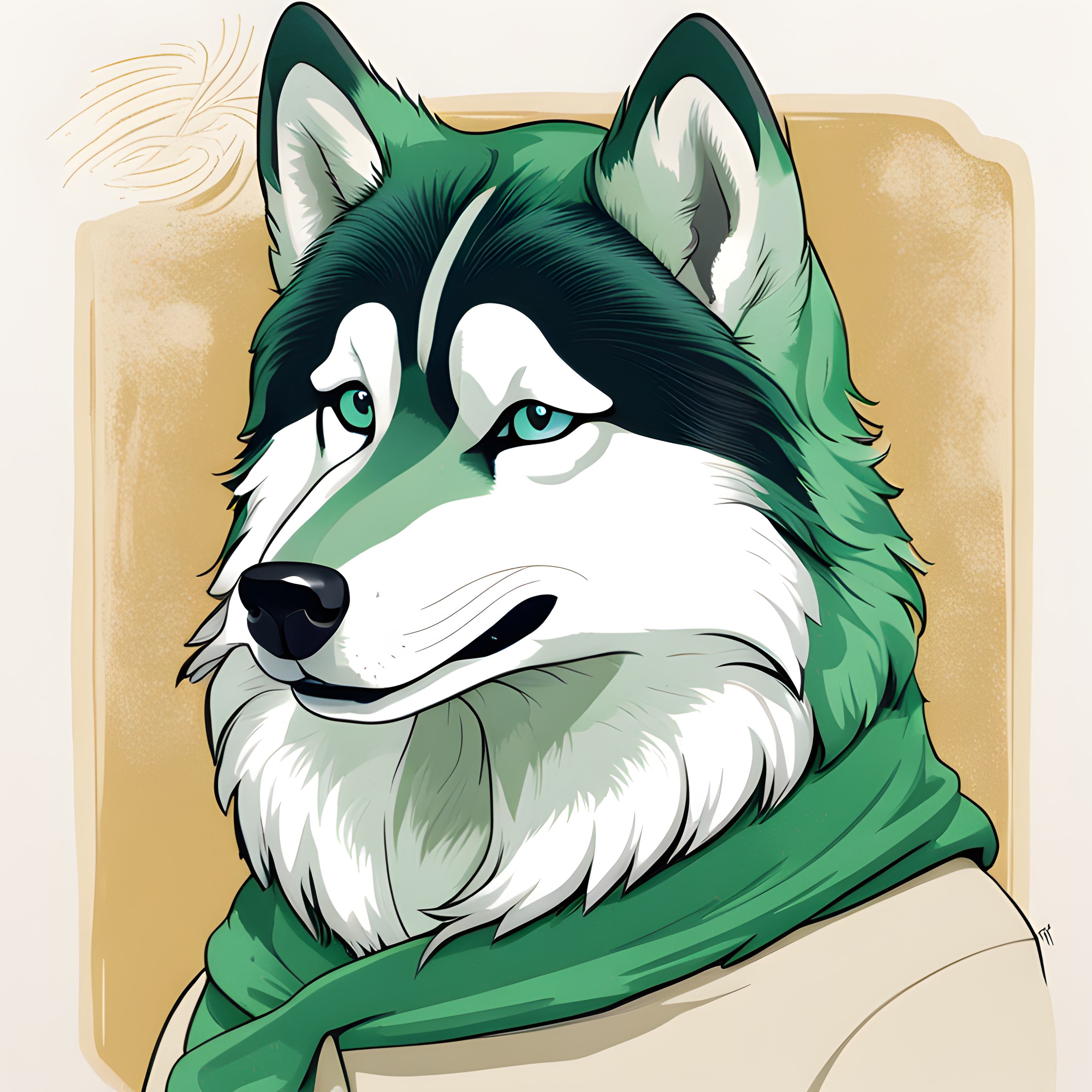I’ve generally been against giving AI works copyright, but this article presented what I felt were compelling arguments for why I might be wrong. What do you think?
The moment that copyright is granted to AI art is the moment that the war against corporations loses. Getty images is just going to generate endless images, copyright them all, and sue any small artist that starts having an independent thought
All of the discussion over copyright of AI is a complete waste of time. Given only a bit of human editing AI art is indistinguishable from art made in entirety by a person. It will be nothing but a “feel good” law that does nothing to help the artists AI has displaced. We should be focusing directly on helping artists or others maintain their livelihood.
That’s a single line needed that clarifies that derivative works originally created by AI are not copyrightable, to make it explicit and distinct from the ability to claim copyright on non-transformative works made from public domain content. AI created works cannot be copyrighted (and that should include things like software) and derivative works should now be considered non-copyrightable as well. The onus should be shifted to the creator to prove that their work is transformative in order to claim copyright over the work.
Agreed. I believe in a strong public domain and militantly protected fair use; AFAIC, all unaltered AI output should be considered public domain. Direct human authorship (or “substantially transformative” modification) is the benchmark for where copyright should apply.
That’s not how copyright works. It’s perfectly legal to create exactly the same image that someone else made… as long as you didn’t copy their image.
True, but that assumes that the people filing copyright lawsuits know the law and are acting in good faith. And that the recipient does, too.
If I’m an artist living paycheck-to-paycheck and I get a copyright-related cease-and-desist, I probably won’t have the money or time to fight it even if I know that it’s wrong.
Yeah. In a world where lawyers cost money, corporations can and will squash small artists without hesitation, with cease and desists, DMCA takedowns via youtube and similar platforms, and by threatening lawsuits they won’t even have to persue because most people can’t afford to fight it.
Even companies often can’t afford to fight bigger companies. Like, the makers of Kimba the White Lion had a very clear case that Disney plagiarized them in making The Lion King (if you go on youtube you can find shot-for-shot scene comparisons, it’s bonkers) but couldn’t afford to fight it at all. And that was a company - individual artists have no chance vs disney & etc.
There is literally no instance in which expanding the scope of copyright law is a good thing. Never.
No, the arguments presented in the article are not compelling.
A bit like how Euthanasia is foundationaly fine but it’s allowance under capitalism leads to the poor being pressured to die, while capitalism oppresses us fucking over A.I. art’s ability to be copyrighted is good.
If it were allowed to be copyrit corporations would fuck over creatives more than they currently do and use it to union bust.
Of course in a post-capitalist world copyright won’t matter.Therefore this shit should never get copyright protection.
The strongest argument against AI art is that it is derivative of the copyrighted art it is based on. A photo of a copyrighted artwork would be similarly difficult to copyright. In this sense, AI art is more akin to music sampling in that it uses original material to make something new – and to sample music you must ask permission.
I think this nails it. It’s probably the attack authors will use against OpenAI.
But the copyright office clearly states otherwise, so we’re in for a showdown.
Personally, I think the AI stuff seems more akin to writing a book in the style of another author, which is completely legal. And, to be clear, my option has no legal effect here whatsoever. 😅
There are two separate issues here. First, can you copyright art that is completely AI-generated? The answer is no. So openAI cannot claim a copyright for its output, no matter how it was trained.
The other issue is if openAI violated a copyright. It’s true that if you write a book in the style of another author, then you aren’t violating copyright. And the same is true of openAI.
But that’s not really what the openAI lawsuit alleges. The issue is not what it produces today, but how it was originally trained. The authors point out that in the process of training openAI, the developers illegally download their works. You can’t illegally download copyrighted material, period. It doesn’t matter what you do with it afterwards. And AI developers don’t get a free pass.
Illegally downloading copyrighted books for pleasure reading is illegal. Illegally downloading copyrighted books for training an AI is equally illegal.
I’m happy with the illegal downloading being illegal. Where things get murky for me is what algorithms you’re allowed to use on the data.
I get the impression that if they’d bought all the books legally that the lawsuit would still be happening.
If they bought physical books then the lawsuit might happen, but it would be much harder to win.
If they bought e-books, then it might not have helped the AI developers. When you buy an e-book you are just buying a license, and the license might restrict what you can do with the text. If an e-book license prohibits AI training (and they will in the future, if they don’t already) then buying the e-book makes no difference.
Anyway, I expect that in the future publishers will make sets of curated data available for AI developers who are willing to pay. Authors who want to participate will get royalties, and developers will have a clear license to use the data they paid for.
You actually can. I recommend reading this article by Kit Walsh, a senior staff attorney at the EFF if you haven’t already. The EFF is a digital rights group who most recently won a historic case: border guards now need a warrant to search your phone.
Here’s an excerpt:
Like copying to create search engines or other analytical uses, downloading images to analyze and index them in service of creating new, noninfringing images is very likely to be fair use. When an act potentially implicates copyright but is a necessary step in enabling noninfringing uses, it frequently qualifies as a fair use itself. After all, the right to make a noninfringing use of a work is only meaningful if you are also permitted to perform the steps that lead up to that use. Thus, as both an intermediate use and an analytical use, scraping is not likely to violate copyright law.
The article I linked is about image generation, but this part about scraping applies here as well. Copyright forbids a lot of things, but it also allows much more than people think. Fair use is vital to protecting creativity, innovation, and our freedom of expression. We shouldn’t be trying to weaken it.
You should also read this open letter by artists that have been using generative AI for years, some for decades. I’d like to hear your thoughts.
When determining whether something is fair use, the key questions are often whether the use of the work (a) is commercial, or (b) may substitute for the original work. Furthermore, the amount of the work copied is also considered.
Search engine scrapers are fair use, because they only copy a snippet of a work and a search result cannot substitute for the work itself. Likewise if you copy an excerpt of a movie in order to critique it, because consumers don’t watch reviews as a substitute for watching movies.
On the other hand, openAI is accused of copying entire works, and openAI is explicitly intended as a replacement for hiring actual writers. I think it is unlikely to be considered fair use.
And in practice, fair use is not easy to establish.
You should know that the statistical models don’t contain copies of their training data. During training, the data is used just to give a bump to the numbers in the model. This is all in service of getting LLMs to generate cohesive text that is original and doesn’t occur in their training sets. It’s also very hard if not impossible to get them to quote back copyrighted source material to you verbatim. If they’re going with the copying angle, this is going to be an uphill battle for them.
I know the model doesn’t contain a copy of the training data, but it doesn’t matter.
If the copyrighted data is downloaded at any point during training, that’s an IP violation. Even if it is immediately deleted after being processed by the model.
As an analogy, if you illegally download a Disney movie, watch it, write a movie review, and then delete the file … then you still violated copyright. The movie review doesn’t contain the Disney movie and your computer no longer has a copy of the Disney movie. But at one point it did, and that’s all that matters.
Read the article I linked, it goes over this.
Derivative doesn’t mean what you think it means. I recommend reading this article by Kit Walsh, a senior staff attorney at the EFF if you haven’t already. The EFF is a digital rights group who most recently won a historic case: border guards now need a warrant to search your phone.
Here’s an excerpt:
First, copyright law doesn’t prevent you from making factual observations about a work or copying the facts embodied in a work (this is called the “idea/expression distinction”). Rather, copyright forbids you from copying the work’s creative expression in a way that could substitute for the original, and from making “derivative works” when those works copy too much creative expression from the original.
Second, even if a person makes a copy or a derivative work, the use is not infringing if it is a “fair use.” Whether a use is fair depends on a number of factors, including the purpose of the use, the nature of the original work, how much is used, and potential harm to the market for the original work.
You should also read this open letter by artists that have been using generative AI for years, some for decades. I’d like to hear your thoughts.
Which works were sampled for this?
Is that a picture of a straw man?
It’s characters from a popular TV show as knitted figures.
You can’t copyright AI-generated art even if it was only trained with images in the public domain.
In fact, you can’t copyright AI-generated art even it was only trained with images that you made.
I bet you could build a machine that could recognize subject matter from photographs of it more feasibly than you could build a machine that recognized training data from output
🤖 I’m a bot that provides automatic summaries for articles:
Click here to see the summary
The ruling raised an important question: Was the issue just that Thaler should have listed himself, rather than his AI system, as the image’s creator?
Then on September 5, the office rejected the copyright for Théâtre D’opéra Spatial, holding that it “was not the product of human authorship” because it had been created by the AI software Midjourney.
The nation’s highest court acknowledged that “ordinary” photographs may not merit copyright protection because they may be a “mere mechanical reproduction” of some scene.
So even though a mechanical process captured the image, it nevertheless reflected creative choices by the photographer, and therefore deserved copyright protection.
Or consider the time an Associated Press photographer, Mannie Garcia, snapped a photo of then-Sen. Barack Obama listening to George Clooney during a 2006 panel discussion.
Two years later, artist Shepard Fairey used Garcia’s photo as the basis for an illustration called “Obama Hope” that was ubiquitous during the 2008 presidential campaign.
Saved 81% of original text.
I disagree with this reductionist argument. The article essentially states that because ai generation is the “exploration of latent space,” and photography is also fundamentally the “exploration of latent space,” that they are equivalent.
It disregards the intention of copywriting. The point isn’t to protect the sanctity or spiritual core of art. The purpose is to protect the financial viability of art as a career. It is an acknowledgment that capitalism, if unregulated, would destroy art and make it impossible to pursue.
Ai stands to replace artist in a way which digital and photography never really did. Its not a medium, it is inference. As such, if copywrite was ever good to begin with, it should oppose ai until compromises are made.
If capitalism were unregulated you’d have anarchy and no copyright law whatsoever.
Doesn’t this constitute capitalism destroying art? It’s literally an attack on a method that actual artists are using in their art, trying to deny small creators the ability to expand their output independently.
You’re saying you’re concerned about AI replacing artists, but the people you’re supporting taking tools away from are artists. Artists who are able to use AI to massively increase their productivity are able to create independent works in a much shorter time frame and with much fewer resources than before AI art.
AI art can’t replace anything on its own. It needs actual artistic input and adjustments by an actual human being to consistently output anything that isn’t garbage. What it can do is add tremendous detail and texture to hand drawn art in a much more efficient way, and create large amounts of assets for more involved projects much more cheaply and efficiently than otherwise.
The upshot is that the people who make things actually have enough resources to just make them without having to first do a little bowing and scraping and compromising their artistic vision. AI art takes independent creators with a reasonable ability to create assets for their projects and plops the equivalent of a moderately talented and well-funded art department into their laps for free or close to it.
No boards deciding the product isn’t profitable or needs monetization, no feckless executives looking for somewhere to add ‘input’, basically nobody whose head is full of money getting in the way of making art.
That, to me, is a better world.
So like, if you’re wanting to crusade against AI on behalf of independent creators, please don’t. Please instead do empower us to not have to sell out our ideas in order to make them a reality.
I’m not anti ai, I use it generative ai all of the time, and I actually come from a family of professional artists myself ( though I am not ). I agree that its a tool which is useful; however, I disagree that it is not destructive or harmful to artist simply because it is most effective in thier hands.
-
it concentrates the power of creativity into firms which can afford to produce and distribute ai tools. While ai models are getting smaller, there are frequently licensing issues involved (not copywrite, but simply utilizing the tools for profit) in these small models. We have no defined roadmap for the Democratization of these tools, and most signs point towards large compute requirements.
-
it enables artist to effectively steal the intellectual labor of other artist. Just because you create cool art with it doesn’t mean it’s right for you to scrape a book or portfolio to train your ai. This is purely for practical reasons. Artists today work thier ass of to make the very product ai stands to consolidate and distribute for prennies to the dollar.
you fail to recognize that possibility that I support ai but oppose its content being copywritable purely because firms would immediately utilize this to evade licensing work. Why pay top dollar for a career concept artist’s vision when you can pay a starting liberal arts grad pennies to use Adobe suit to generate images trained in said concept artists?
Yes, that liberal arts grad deserves to get paid, but they also deserve any potential whatsoever of career advancement.
Now imagine instead if new laws required that generative ai license thier inputs in order to sell for profit? Sure, small generative ai would still scrape the Internet to produce art, but it would create a whole new avenue for artist to create and license art. Advanced generative ai may need smaller datasets, and small teams of artist may be able to utilize and license boutique models.
-
The author of this opinion has a point, and that artist not getting ownership of works involving AI image generation is a consequence, but I like that it also discourages big studios from taking AI generated mishmash as a drop-in replacement for human produced artwork. If they used it some video generation program at this moment to replace strikers, there are grounds that the studios have no ownership of it.
Anyways, I think copyright law should be fully torn down and rebuilt to reasonable levels, so AI may be a good catalyst to achieve this vision of mine.
As an author, I say cut the term waaay down. 12 years plus the option for a 12-year one-time renewal.
Some will get screwed, but the entire populace will gain.
I’d been thinking recently that cutting the copyright term down to 20 years would be reasonable. So while 12 years feels a bit low to me, the optional 12 year renewal (taking it to 24 years in total) works just fine. You have my vote.
The argument relies a lot on an analogy to photographers, which misunderstands the nature of photography. A photographer does not give their camera prompts and then evaluate the output.
A better analogy would be giving your camera to a passerby and asking them to take your photo, with prompts about what you want in the background, lighting, etc. No matter how detailed your instructions, you won’t have a copyright on the photo.
No matter how detailed your instructions, you won’t have a copyright on the photo.
If you reach a certain threshold you’d be co-creator. AIs can’t hold copyright, so in the analogous case you’d be sole copyright holder.
Take the movie industry and try to argue, as a camera operator, that the director has no rights at all to the video you shoot. I’m waiting.
In the movie industry, everyone usually signs a work for hire contract that specifies who will have the rights to the completed film.
However, in a recent case the director (Alex Merkin) did not sign a contract and then tried to claim copyright afterwards. The court said that directors have no inherent copyright over film:
We answer that question in the negative on the facts of the present case, finding that the Copyright Actʹs terms, structure, and history support the conclusion that Merkinʹs contributions to the film do not themselves constitute a ʺwork of authorshipʺ amenable to copyright protection. … As a general rule, the author is the party who actually creates the work, that is, the person who translates an idea into a fixed, tangible expression entitled to copyright protection. … But a directorʹs contribution to an integrated ʺwork of authorshipʺ such as a film is not itself a ʺwork of authorshipʺ subject to its own copyright protection.
As a general rule, the author is the party who actually creates the work, that is, the person who translates an idea into a fixed, tangible expression entitled to copyright protection
Yes that’s a thing directors do. They do the translation between script and image, anything cinematography in a movie is due to them.
Taking the judges’ reasoning to an extreme you’d expect them to rule that if I dictate a book to someone who then writes it down I do not own copyright because I did not give the work its tangible expression.
Whose lawyers was he up against? Disney?
There’s gaussian noise involved in many of photoshop’s brushes I’m pretty sure.
Does that make photoshop not a pure function of the user’s input, and hence incapable of producing anything copyrightable?
You need direct control over some elements of a work to claim copyright. Not necessarily all of them.
So even if the microtexture is out of your control, you still have complete control of the framing, color, etc. That’s sufficient to claim copyright.
If you lose control of every element by replacing them all with prompts and/or chance, then you lose the copyright. Which is what happened in the “monkey selfie” photo.
A photographer does not give their camera prompts and then evaluate the output.
I understand what you’re trying to say, but I think this will grow increasingly unclear as machines/software continue to play a larger and larger part of the creative process.
I think you can argue that photographers issue commands to their camera and then evaluate the output. Modern digital cameras have made photography almost a statistical exercise rather than a careful creative process. Photographers take hundreds and hundreds of shots and then evaluate which one was best.
Also, AI isn’t some binary on/off. Most major software will begin incorporating AI assistant tools that will further muddy the waters. Is something AI generated if the artist added an extra inch of canvas to a photograph using photoshops new generative fill function so that the subject was better centered in the frame?
I think the major difference that determines copywrightability is the amount of control the artist has on the outcome. If a photographer doesn’t like the composition of a photo, there’s a variety of things they can do to directly impact the photo (camera positioning/settings, moving the subjects, changing lighting, etc.), before it’s even captured by the camera. If someone is generating a picture with AI and they don’t like the composition of the image, there’s nothing they can do directly impact what the output will be.
If you want a picture of an apple, where the apple is placed precisely at a certain spot in frame, a photographer can easily accomplish this, but someone using AI will have to generate the image over and over, hoping that the algorithm decides to eventually place the apple exactly in the desired spot
This isn’t true with AI generators. You can absolutely draw in a shitty stick figure with the pose you want and it’ll transform that into a proper artwork with the person in that pose. There are tons and tons of ways to manipulate the the output.
And again, we give copyright to artists that incorporate randomness into their art. If I throw darts at paint filled balloons I get to copyright the output. It would be absolutely impossible to replicate that piece and I only have vague control over the results.
before it’s even captured by the camera. If someone is generating a picture with AI and they don’t like the composition of the image, there’s nothing they can do directly impact what the output will be.
That is plain incorrect.
Many cameras these days have AI autofocus for subject detection. Phone cameras use AI image enhancemnnt by default.
The copyright office has been pretty clear that if an artist is significantly involved in creating an image but then adjusts it with AI, or vice versa, then the work is still eligible for copyright.
In all of the cases where copyright was denied, the artist made no significant changes to AI output and/or provided the AI with nothing more than a prompt.
Photographers give commands to their camera just as a traditional artist gives commands in Photoshop. The results in both cases are completely predictable. This is where they diverge from AI-generated art.
This AI ruling is also actually completely in-line with existing precedent from the photography world.
The US Copyright Office has previously ruled that a photograph taken by a non-human (in this case, a monkey) is not copyrightable:
https://en.wikipedia.org/wiki/Monkey_selfie_copyright_dispute
If he had deliberately caused the monkey to take that photo, he might have owned the copyright.
If you pay a photographer to take photos at your wedding, you own the copyright for those photos - not the photographer.
If you deal with the photographer that you own the images from the wedding and that’s in the contract, yeah. Otherwise, traditional copyright law would apply, and the photographer gets the rights.
deleted by creator
Generally, photographers do not like to offer their services to clients through a Work for Hire Agreement
If I was getting married, I’d find one that will do a work for hire agreement. It’s my wedding, I want to own the photos. Nobody else should be profiting off them (aside from what I paid them to take the photos).
You probably actually wouldn’t when it’s 5 times more expensive.
Unless it is explicity specified in a contract, no you wouldn’t. Most people don’t.
A better analogy would be giving your camera to a passerby and asking them to take your photo, with prompts about what you want in the background, lighting, etc. No matter how detailed your instructions, you won’t have a copyright on the photo.
I like this analogy a lot.
“Prompts” are actually used a lot in creative circles, whether for art or writing. But no matter how specific you are when you write a prompt for, say, r/WritingPrompts (and some of them are incredibly specific due to posters literally having an idea and hoping someone else will write it for them), the resulting story will never be copyrighted to you.
What if you’re paying the writers on a work for hire basis?
In a work for hire contract, the contract explicitly states that the employer gets the copyright.
You can think of the compensation as being partly from employment, and partly from the sale of any copyright.
The writing is still copyrighted to the writers, not to you, unless the contract states otherwise. Same as with the wedding photo example described in other comments.
removed by mod
Just move to that one worker’s collective in Spain that worked for a little while.
Modern copyright sucks balls anyway
This is the first actually decent article I’ve read on AI art. It absolutely covers my concerns and fits with my own experiences using the technology. A lot of this is stuff I’ve been saying, and it’s nice to see that I’m not alone here.
AI art is not at all straight-forward and absolutely requires creative input in order to get something usable. Prompt engineering, to me, is itself a type of art. You may at times find that there’s something you want AI to generate that it’s actually quite good at, like old women playing cards around a table, but usually you’re going to be looking for something it struggles with. This is when you need to be creative and inventive with prompts, thinking about things from the perspective of what’s probably out there in abundance.
Recently I needed to make some rings for my upcoming Planescape-themed Conan Exiles server. I started out by asking NightCafe for rings and it output a bunch of useless junk. Using my brain, I realized it’s probably much more likely that it’ll have a reference point for ‘wedding band’, and then I’ll have my ring shape and can work from there. This worked quite nicely and it started producing rings, but it was often shoving them half out of the picture as it tends to do. There are some negative prompts that sometimes help with this, but I have my own technique that I think works better.
My method for framing objects in AI art generators is to surround them with something. If you add ‘surrounded by’ and some other object that’s slightly smaller than the object you need a clean shot of, usually you’ll get your image of the whole thing. Which object you pick to surround your target object with makes all the difference.
In this particular case, I first tried to put the ring on a table surrounded by small dogs, but it got caught up in the dogs and forgot to render the ring. Eventually I landed on ‘surrounded by berries’, and that was the jackpot. I’m guessing this one was a good choice because of Christmas themed ads, because suddenly my pictures were all full of mistletoe blasted with the kind of bokeh you only see in jewelry ads and wedding photos. And within each shot, a nicely centered ring in half-decent focus.
Now this is where I got really lucky. During my ‘surrounded by berries’ iterations, the generator decided to do something weird. It put a bunch of tiny little purple berries along the outer surface of a ring, standing on its side. It was perfect. I took this iteration and used it as a base, feeding it back into NightCafe and decreasing the noise ratio down to like 20-40% while turning up the prompt weight a little and changing my prompt. Now instead of berries and wedding bands, I go back to my initial search for magic rings encrusted with glowing gems. And in one step, my berries are a gorgeous array of gemstones. A few iterations later, I have a couple of decent rings to bring into GIMP and do some work with.
After pathing out the rings, separating the gems, adjusting the colors, and creating a few iterations with different colored bands and gem stones for my different finalized options, I had my results. A little blurry, okay, but totally fine for an inventory item thumbnail. Looks gorgeous.
Personally, I’ve dipped my toes into all sorts of art. I write, I take pictures, I sing, I play around with painting, I’ve made animations, games, mods, videos, weird unpalatable noise music; if it’s a method of creative expression I may not be particularly good at it but I’ve almost certainly tried some version of it. And to me, this feels like creative expression. It feels like art.
Working with AI art feels like trying to collaborate on a project with an alien robot. You’re trying to take these presumptions that we have and figure out how to get a workable result from something that fundamentally doesn’t understand any of it. It’s this really fascinating exercise in exploring this almost dream-like logic that’s heavily rooted in media consumption, and weirdly enough your own understanding of media culture can be a way of teasing out what you want.
I don’t just go and say ‘please give me one rabbit’ and get a rabbit. It doesn’t feel like handing the project off to another artist with some notes and coming back to see what they made, it feels like an actively creative process. It doesn’t feel more creative when I’m editing those images than when I’m digging through this strange robot-logic dreamscape looking for them.
And like, given that I could literally just take a picture one of my own rings and edit that, I don’t see how it’s less mine via creative output. I bought the ring, I didn’t spend an hour digging it out of a morass of nonsense.
Frankly, I care little about law and less about money. I’ll make the things I’m inspired to make with the methods I’m inspired to make them with and we’ll see what happens. Maybe I’ll make something people like, maybe I’ll cut my own ear off and die penniless, but the opinions of the copyright office on what legal claims I can make around my work aren’t really a primary factor in that or in my decision making when it comes to art.
I do hope they’ll read articles like these and talk to folks with similar perspectives and find a better take, though.
I’m really good at searching Google. I’m a “prompt engineer” too
Thank you for describing your process in such detail. I’m sorry if this is going to come off as overtly contrary; that’s such an impersonal convoluted way to make an image. There are good illustrators out there that can sketch roughs and make a beautiful finished painting in a night, all right out of their head. Frank Frazetta would be laughing in his grave at AI art.
I’m in it to make stuff, not to impress you or any dead person. What are you making?
Right now, a game, an album, and um… oil painted MTG Myr Tokens?
Cool!
I am not a good illustrator though, but I’m good at working with AI and Photoshop. Using generated images as a base gives me the best quality in a reasonable time.
I’m pretty sure there are musicians who would roll in their graves at the thought of generating music in synthesizers, yet without we would have electronic music.
I don’t think that is a fair comparison. Electronic musicians don’t outsource song construction to an algorithm that copies all the other songs on the Internet. Even though they can use midi instruments, sequencers, and samples (which do carry a known risk of copyright violation) they’re still composing or performing.
The entire point of generative AI is to generate things not present in the training set by teaching it to abstract the concept.
It’s a very fair comparison because in both cases you take the physical skill requirement that takes years to learn and even longer to master out of producing art. To make a good electronic song you need to compose, but you don’t need to know how to physically play the instruments. To make a good image you need to know how to compose it, but not how to physically draw it.
That’s a good argument. I get this. The problem that I see is that you aren’t very present in the art. The AI is 100% leading you with what it knows. AI is essentially helping you create a collage of all the styles and bits of image content on the Internet. How are we going to develope new styles? A human can use their imagination and skill to create something groundbreaking and pioneering (artists had to break ground and fill the world with this art for AI to be even able to do this). AI is just going to continue to remix remixes of remixes. It’s sad to me. That’s not really what art is about. I’m not saying AI art isn’t useful. It’s a remix machine.
The problem that I see is that you aren’t very present in the art.
Now that depends on how much agency you give yourself, doesn’t it? If you just give Midjourney a prompt and call it a day then yes. But the result won’t be very good, will it? Similar how you could just input random notes to a synthesizer and get shitty music in return.
The problem is that the majority of people does exactly that and then shares the resulting images online, making it appear that is all there is to it. You can however express yourself artistically by using prompt engineering to get something good and than working with that to further approach what you imagine by editing the result. There are many people out there who could not artistically express themselves as they lacked the ability to translate their vision to a canvas. With the help of image generating AI they can finally express themselves. I think this is something beautiful.
How are we going to develope [sic] new styles?
While I do agree with you that our current AI image generators won’t be very innovative, this is by design and not necessity.

This is what you would have gotten in let’s say 2017 when asking an AI what it thinks a dog looks like (s. DeepDream).

And a couple years later you can achieve this with Midjourney.
Things are developing very fast and in the end of the day, even if we would never get an AI that can innovate art there is nothing stopping humans from just doing it themselves as we have always done over millennia. You can already greatly increase the creativity of existing image generators by tweaking the randomness factors and those algorithms don’t just remix existing images, they are actually creating their own. You need the training set of existing labeled images to train the AI as it doesn’t know what a frog is, nor a tree or anything really.
AI is just going to continue to remix remixes of remixes
This is indeed a concern. If you feed too much AI generated images into the training of an image generator it causes a sort of degenerative disease in the AI that results in inferior results. Some sort of AI incest so to speak. The prevalence of AI art on the internet and the inability to reliably differentiate it from human art is proving to be a challenge for making new training sets.
There is an error that many in the dispute are making…
Imagine that BORG-AI is an ai that was trained ONLY on GPL2 program-code…
Imagine that you use it to fill-in some functions in your codebase…
What sort of copyright-status should be on those??
I say they should be GPL2, and they should be considered derivative of the ENTIRE training-data-set.
That doesn’t mean I think that the BORG-AI should be a copyright holder, though!
I’m saying that there should be a NEW category, between uncopyrighted & copyrighted, and that the training-sets need to be segregated by license, so that derivatives CAN know what their legal licensing-status is.
GPL2, GPL3, BSD, LGPL2, whatever… it needs to be consistent within the training-data-set, so that the derivative of THAT module/expert can be having the same license, see?
This is going to be the kind of thing that builds resentment against humanity among AI persons. Of course the law will lag by perhaps a hundred years before recognizing them as persons, and more likely they’ll fix it themselves instead of waiting for us to fix it.
Copyright itself is weird.
That said, a simpler way to handle this would be that the image generator model is a tool. And it doesn’t really matter if your input is through a paintbrush or a prompt in an image generator, you’re responsible for that piece of content thus you have copyright over it.
You can further couple it with the argument @luciole@beehaw.org used, that AI art is derivative work, and claim that the authors of the works used to train the model shall have partial copyright over it too.
AI art is derivative work, and claim that the authors of the works used to train the model shall have partial copyright over it too.
To me this is a potential can of worms. Humans can study and mimic art from other humans. It’s a fundamental part of the learning process.
My understanding of modern AI image generation is that it’s much more advanced than something like music sampling, it’s not just an advanced cut and paste machine mashing art works together. How would you ever determine how much of a particular artists training data was used in the output?
If I create my own unique image in Jackson Pollock’s style I own the entirety of that copyright, with Pollock owning nothing, no matter that everyone would recognize the resemblance in style. Why is AI different?
It feels like expanding the definition of derivative works is more likely to result in companies going after real artists who mimic or are otherwise inspired by Disney/Pixar/etc and attempting to claim partial copyright rather than protecting real artists from AI ripoffs.
To me this is a potential can of worms.
Copyright is absolutely a can of worms. It always has been.
[Warning: IANAL] The problem is that you guys assume that those generator models are doing something remotely similar to humans studying and mimicking art from other humans. They don’t; at the end of the day the comparison with music sampling is fairly apt, even if more or less complex it’s still the same in spirit.
Furthermore from a legal standpoint a human being is considered an agent. Software is at the best seen as a tool (or even less), not as an agent.
Quantifying “how much” of a particular artist’s training data was used in the output is hard even for music sampling. Or for painting, plenty works fall in a grey area between original and derivative.
It feels like expanding the definition of derivative works is more likely to result in companies going after real artists who mimic or are otherwise inspired by Disney/Pixar/etc and attempting to claim partial copyright rather than protecting real artists from AI ripoffs.
Following this reasoning (it’ll get misused by the American media mafia), it’s simply better off to get rid of copyright laws altogether, and then create another legal protection to artists both against the American mafia and people using image generators to create rip-offs.
Following this reasoning (it’ll get misused by the American media mafia), it’s simply better off to get rid of copyright laws altogether, and then create another legal protection to artists both against the American mafia and people using image generators to create rip-offs.
Certainly no disagreement from me on this point
But it does matter whether your input is a brush or a prompt.
If you physically paint something with a paintbrush, you have a copyright over your work.
If someone asks you to physically paint something by describing what they want, you still have copyright over the work. No matter how picky they are, no matter how many times they review your progress and tell you to start over. Their prompts do not allow them to claim copyright, because prompts in general are not sufficient to claim copyright.
But it does matter whether your input is a brush or a prompt. // If you physically paint something with a paintbrush, you have a copyright over your work.
By “thus you have copyright over it”, I’m saying that it should apply equally to both (paintbrush vs. image generator), not that it currently does.
So if someone asks you to paint something and gives you detailed instructions about what they want to see in your painting, do you think they should have copyright over your work?
Under the spirit of copyright law (that, again, I criticise), and depending on how detailed those instructions are, that wouldn’t be “my work”. It would be “our work”, because the person in question is actively creating the work alongside me.
Transposing this reasoning to images generated by Stable Diffusion etc., you’d get co-authorship between the person inputting the prompt and the people who made the works used to feed the model with. You could even theoretically argue a third author - the person/people coding the model. (It’s a legal nightmare.)
No, under copyright law it would be your work and your work alone.
Someone who is providing suggestions or prompts to you is not eligible to share the copyright, no matter how detailed they are. They must actually create part of the work themselves.
So for instance if you are in a recording studio then you will have the full copyright over music that you record. No matter how much advice or suggestions you get from other people in the studio with you. Your instruments/voice/lyrics, your copyright.
Otherwise copyright law would be a constant legal quagmire with those who gave you suggestions/prompts/feedback! Remember, an idea cannot be copyrighted, and prompts are ideas.
In the case of Stable Diffusion, the copyright would go to Stable Diffusion alone if it were a human. But Stable Diffusion is not a human, so there is no copyright at all.
Ultimately the only agent involved is the person commanding the vacuum cleaner through the voice assistant. If someone got copyright, that should be that person; and if we’re going to be consistent with the current (and rather shitty) typical copyright laws used by plenty govs, it should.
A prompt is more than a command. It is a command with an immediate output that is not fully predictable by the prompt-giver.
So for example the copyright office might ask, “This image includes a person whose left eye is a circle with radius 2.14 cm. Why is it 2.14 cm?”
Traditional artist: because I chose to move the paintbrush (or mouse) 2.14 cm. The paintbrush (mouse) can only go where I move it.
Photographer: because I chose to stand 3 meters from the subject and use an 85mm lens on my camera. The magnification (size) of the eye depends only on those factors.
AI-assisted artist: because I asked for larger eyes. I did not specify precisely 2.14 cm, but I approved of it.
In your example, if you can fully predict the output of the vacuum by your voice command, then it is no different than using a paintbrush or mouse.
Counterpoint: imagine that I used physical dice to decide the size of the eyes, I just rolled 4d6 and got 21 so the eye is going to be 21mm large. From a legal standpoint, I believe that I’d be still considered a trad artist; however effectively I’m doing a simpler version of what the image generator-assisted artist does.
The output is still fully predictable by the artist.
The dice didn’t make the eyes, after all. They just showed 21, now it’s your job to actually make 21mm eyes. In doing so, you could mess up and/or intentionally make 22mm eyes. If someone asks, “Why are these eyes 21mm?”, you can answer “I decided to do what the dice asked”.
The dice are more like a client who asks you to draw a portrait with 21mm eyes. In other words, they are giving you a prompt. Nobody but you knows if they will get what they asked for.
The dice didn’t make the eyes, after all.
And arguably, neither the image generator did. Who did were the artists of the works being fed into the model. In this sense, the analogy is like the artist picking an eye from some random picture and, based on the output of the dice, resizing it to 21mm.
you can answer “I decided to do what the dice asked”.
The same reasoning still applies to Stable Diffusion etc., given that you can heavily tweak the output through your prompt. And you can also prompt the program to generate multiple images, and consciously pick one of them.
And arguably, neither the image generator did. Who did were the artists
In which case, neither the image generator nor its operator are eligible for copyright.
The same reasoning still applies to Stable Diffusion etc., given that you can heavily tweak the output through your prompt.
The point is that the AI generator (or, if you prefer, its training data) exercised direct control over the image, not you. Providing additional prompts does not change this, just as rerolling the dice wouldn’t make the dice the author.
For that matter, gives extensive prompts or other artistic direction to a human artist would not make you eligible for copyright, either. Even if the artist was heavily influenced by your suggestions.
Finally, choosing one among many completed works is not a creative process, even if it requires artistic judgment. Choosing repeatedly does not transform it into a creative process. That’s why choosing your favorite song does not mean you are a song creator.
You’re ascribing full human intelligence and sentience to the AI tool by your example which I think is inaccurate. If I build a robot arm to move the paintbrush for me, I would have copyright. If make a program to move the robot arm based on various inputs I would have copyright. Current (effective) AIs prompts are closer to a rudimentary scripting rather than a casual conversation.
It’s not a matter of intelligence or sentience. The key question is whether the output of a prompt is fully predictable by the person who gave the prompt.
The behavior of a paintbrush, mouse, camera, or robot arm is predictable. The output of a prompt is not (at least, not predictable by the person who gave the prompt).
Predictable? How are people ‘predicting’ those abstract paintings made by popping balloons or spinning brushes around or randomly flinging paint around. Where does predictable come in? Humans have been incorporating random elements into art for ages.
After you’ve spun enough brushes or popped enough balloons, the results will be fairly predictable. And some elements, for example the color of paint in the brushes/balloons, would be under full control.
Even if the final result is not completely predictable, an artist only needs to establish that a significant part of it is a form of creative expression.
Fuck A.I. art and fuck its copyright, so we’re clear where I’m coming down on things, but that argument alone would seem to discount alot of experimental stuff I’ve done where I won’t know how it’ll come out when I start but I keep it if it looks/sounds cool.
In most experimental work, the artist does make a direct contribution to some key elements of the work, for example framing or background. Which is all that’s necessary, you can still obtain copyright over something that is only partially under your control.
If an artist gives up all direct control over an experimental work - such as the infamous monkey selfie - then I think they should no longer be able to copyright it.
Even if you can’t fully predict how a work will turn out, you still have control over your artistic processes in a way that the AI user is lacking. Even AI engineers often struggle to figure out what makes their models make the decisions that they do.
But don’t forget that this is a question that exists in both philosophical and practical aspects. Philosophically “what is art” is a very nebulous thing to pin down. Practically, if AI users are allowed to copyright their output, they can use it for “plagiarism laundering” so to speak, by ripping off artists’ entire collections, training AI on it, and then selling works that are clearly based on those other artists’ even if non-identical. This is not something current copyright accounts for, but current copyright was made for a world with printing presses and photocopiers, not one with AI.
That doesn’t work with AI for a variety of technical and practical reasons.
Two people could, completely coincidentally, generate something that is so similar that it looks the same at a glance… even with dramatically different prompts on dramatically different models.
No, the output of an AI is fundamentally “coincidental” and should not be subject to copyright. Human intent and authorship MUST be a significant factor. An artist can still use AI in their workflow, but their direct involvement and manipulation must be meaningfully “transformative” for copyright to apply in a fair and equitable way.
No, the output of an AI is fundamentally “coincidental” and should not be subject to copyright.
If the image generator in question generated a piece of content that looks similar enough to some piece of content protected by copyright, odds are that it has been trained with it, or that both were produced with the same set of pieces of content.
That shows that the issue might be elsewhere - it isn’t the output of the image generators, but the works being fed into the generator, when “training” them. (IMO the word “training” is rather misleading here.)
Human intent and authorship MUST be a significant factor.
Refer to the link in the OP, regarding photography. All this discussion about “intent” (whatever this means) and authorship has been already addressed by legal systems, a long time ago.
their direct involvement and manipulation must be meaningfully “transformative” for copyright to apply in a fair and equitable way.
What does “meaningfully” mean in this context? It’s common for people using Stable Diffusion and similar models to create a bunch of images and trash most of them away; or to pick the output and “fix” it by hand. I’d argue that both are already meaningful enough.
If anything, this only highlights how the copyright laws were already broken, even before image gen…
That doesn’t work with AI for a variety of technical and practical reasons.
As a rule, the law doesn’t care about technicalities or practicalities.
Two people could, completely coincidentally, generate something that is so similar that it looks the same at a glance… even with dramatically different prompts on dramatically different models.
Sure. If two humans take a photo of the same sunset standing next to each other, they will be virtually identical and they will both own full copyright protection for the photo they took.
That protection does make the other person’s photo an illegal copy - because it wasn’t a copy.
No, the output of an AI is fundamentally “coincidental” and should not be subject to copyright. Human intent and authorship MUST be a significant factor. An artist can still use AI in their workflow, but their direct involvement and manipulation must be meaningfully “transformative” for copyright to apply in a fair and equitable way.
Of course. By the way that applies to human created works too. Copyright doesn’t apply to everything created by a human, only certain things are protected. If someone asks you what 2 plus 2 is, and you reply “4”… you don’t own the copyright on that answer. It wasn’t creative enough to be protected under copyright. If you reply with a funny joke, then that’s protected.
Two people could generate the same short story through different creative processes too.
not supernatural beings
If God was real and literally came down and showed up at the copyright office, would they really deny him the rights to all creation?
I think that depends on His nationality and where the works were created. Does the US respect copyright claimed in countries that no longer exist (at least in the same form)?


